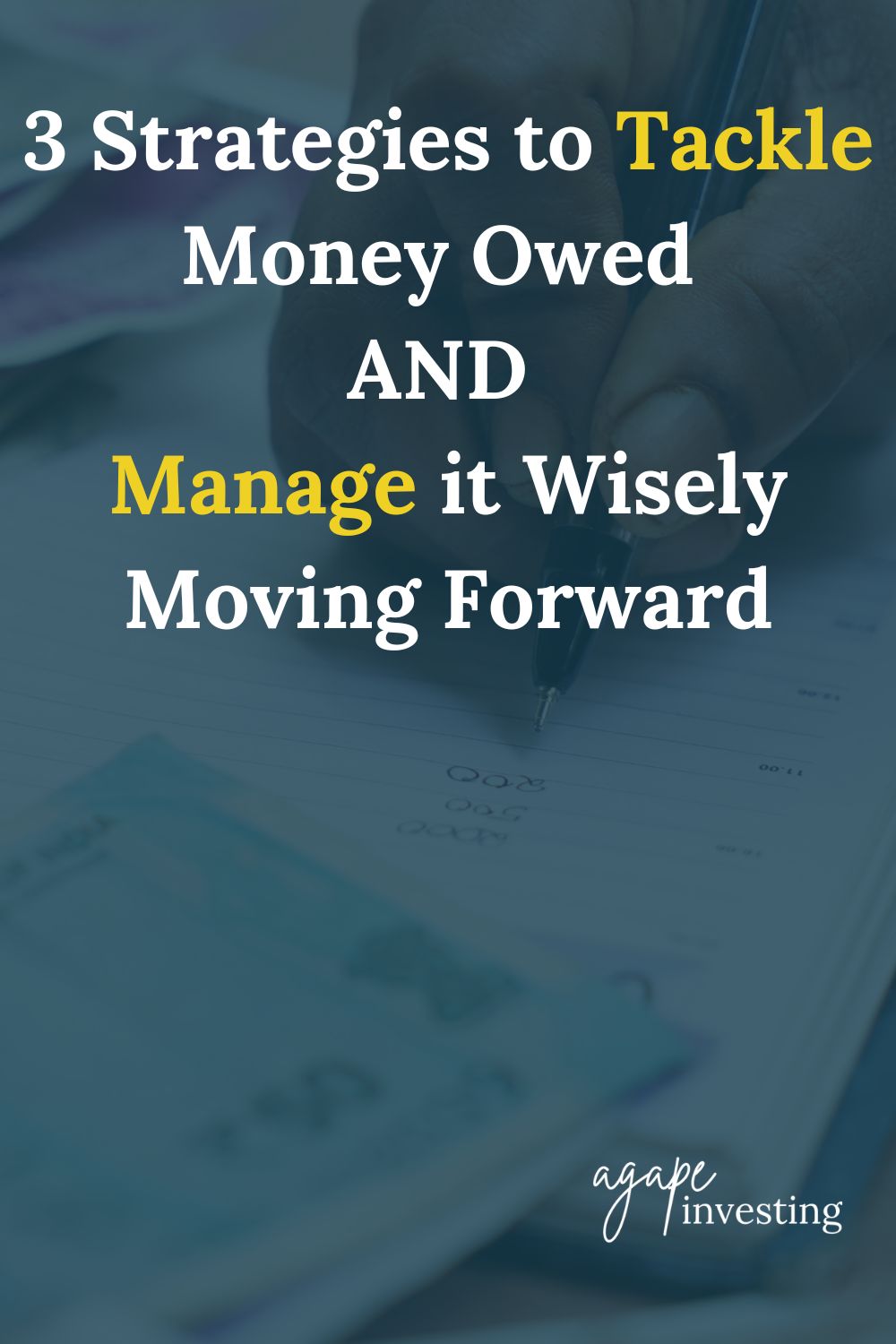Conquer Your Debt Mountain: 3 Strategies to Tackle Money Owed and Manage it Wisely Moving Forward
Debt is Not Inherently a Bad Thing
The Book of Proverbs teaches that “the borrower is servant to the lender” (22:7, KJV). Unlike some people, I don’t interpret this to mean that you should never, ever borrow money. The words are a caution but also a statement of fact.
When you borrow, you should be prepared to subject yourself to the rules, terms, and conditions of the lender. Debt comes with mandatory obligations. You are required to repay your loan, and you are required to notify your mortgage company if you want to expand your home.
Your sense of freedom diminishes when you borrow – but none of this means that you should never borrow money given that debt can be used to acquire large items such as your home, which would take too long for most persons to save and purchase cash – instead you should learn to manage debt wisely and avoid debt mountains!
A Society in Debt
The typical American household carried an average debt of $145,000 in 2021, while the median debt was only $50,971 in 2000, representing an increase of 184 percent. These numbers show that American households are in more debt than they were 21 years ago.
I will help you understand 3 steps you can take to reduce the mountain of debt you may have in your household and how you can better manage debt going forward.

Debt Mountain – What are we really talking about?
You would be considered to have a debt mountain if your debt-to-income (DTI) ratio is much higher than the acceptable DTI in the USA or your country. This ratio shows how much of your income goes toward debt repayment each month and is calculated by taking all your monthly debt payments as a percentage of your gross monthly income. The DTI is used by lenders to determine if you qualify for a mortgage or consumer loan. Most lenders in the U.S. will approve your loan if your DTI is 43 percent or lower; however, some lenders will go up to 50 percent.
Therefore, if you live in the U.S. and have a DTI of more than 50 percent, then you would be considered to have a debt mountain!
There are basically three ways to be rescued off your debt mountains.
Debt Consolidation
This act finds one lender to take over the debts that you owe to multiple lenders, with the outcome being that what you pay the single lender is smaller than the total of what you were paying to all your current lenders.
The monthly payment to the single lender will be smaller for two basic reasons: (1) the interest rate of the single lender is expected to be lower than the average rates offered by the multiple lenders, and (2) you may be able to stretch the repayment period to the single lender over a relatively long period of time to help to reduce the monthly payment to give you some “breathing space” in your spending.
Most banks, credit unions, and other lending institutions offer debt consolidation products, so you don’t have to look too far.
Debt Consolidation – An Illustration
Let’s bring all of these concepts to life with an actual example. In table 1.1 below, you see where Ms. Burrowes is paying a total of $3,511 per month to three lenders. In contrast, table 1.2 reveals where she was able to consolidate the debts (using real estate as security) to pay $622 over 10 years at 6 percent. Notice how much lower this rate is compared to the range of 6.5–16.3 percent she was paying on the multiple loans she had before.
Did this debt consolidation work? Yes, it did. Instead of paying $3,511 per month, she is now paying $622, a saving of $2,889. The main driver of the saving is the 6 percent interest as opposed to the high rates she had before. Another driver is the period of the loan, 10 years, which is a longer period than any of the other three loans. Notice that she was able to use real estate (land) as security, which was one of the main reasons for the 6 percent interest rate.
Table 1.1: Monthly Payments Before Debt Consolidation for a U.S. Borrower
| # | Loan | Amount Owed | Monthly Payment | Interest Rate per Year |
|---|---|---|---|---|
| 1 | Credit card | $30,000 | $1,500 | 16.3% |
| 2 | Car loan (5 years) | $21,000 | $411 | 6.5% |
| 3 | Personal loan (unsecured) | $5,000 | $1,600 | 15% |
| Total | $56,000 | $3,511 |
Table 1.2: Monthly Payment After Debt Consolidation
| # | Loan | Amount Owed | Monthly Payment | Interest Rate |
|---|---|---|---|---|
| 1 | Consolidated loan secured with land (10 years to repay) | $56,000 | $622 | 6% |
Debt consolidations that are done well, can really help you to save a ton of money.
The Lean Machine: Debt Snowball
The basic idea is that you don’t stop making tough adjustments to your life style until you are able to generate enough cash to pay the minimum monthly payments on all debts plus generate extra cash over and above the total of these minimum payments. The next step is to compile a list of all your debts with every person or institution you owe, starting with the smallest to the largest amount. Each month, you pay the minimum debt payment on all debts and then use the extra cash referred to above to attack the smallest debt first regardless of the interest rate on that debt.
Yes, mathematically it would be smarter to pay the debt with the highest interest rate first, but Moty Amar, in his study on the psychology of debt, argues that people are more motivated to keep making sacrifices to attack their debts when the number of debts is falling.
Once you pay off the smallest balance, you will use the monthly payment plus the extra cash that you were using to pay the smallest debt toward attacking the next smallest debt. You repeat that cycle. Each time, the debt repayments for the next debt becomes larger and larger, like a snowball!
Debt Snowball – An Illustration
An example would be helpful here, so let’s look at how Mr. Snow, from Miami, used this strategy.
Table 1.3: Debt Snowball Strategy: Mr. Snow’s List of Debts
| Loan Type | Amount Owed | Minimum Monthly Payment | Interest Rate |
|---|---|---|---|
| Personal loan | $5,000 | $1,600 | 15% |
| Car loan | $21,000 | $411 | 6.5% |
| Credit card | $30,000 | $1,500 | 16.3% |
| Total | $56,000 | $3,511 |
Mr. Snow found extra cash of $350 per month through a ruthless process of cutting expenses and increasing income over and above the total minimum monthly payment for all his debts of $3,511 (see table 1.3 above). He diligently pays off the $5,000 by paying the $1,600 each month plus the extra of $350 (total of $1,950) while continuing to pay the minimum on all the other balances. Upon repaying the entire personal loan, he now pays $2,361 per month toward the car loan by adding the $1,950 to the $411 minimum. He pays that amount until the car loan is paid off, and then he adds the $2,361 to the $1,500 on the credit card and pays $3,861 per month until the credit card is wiped out.
So, just like a snowball that starts out very small, the repayment gets bigger and bigger as it rolls. It started with $1,950 on the personal loan until it snowballed into paying $3,861 per month toward the credit card debt!
You will, as mentioned before, end up paying relatively more in interest using the strategy of the debt snowball, but you are more likely to keep fighting and to win your battle with debt.
The Avalanche Method
If you find it more attractive to attack the loan with the highest interest rate first in order to save on interest costs, then use the extra cash to pay down the highest interest debt first. It’s up to you and what you think is best for you. That strategy is called the avalanche method of debt repayment.
Managing Debt Wisely Going Forward
You should consider doing the following to permanently stay off high debt mountains and to manage debt wisely going forward:
1. Quit Bad Money Habits
You must first be brutally honest with yourself and cut out all the bad habits that caused you to end up in so much debt.
2. Live on a Budget
It is very likely that you weren’t living on a budget before you ended up with so much debt. Start living on a budget as of now. Identify your needs, wants, and amounts you want to save, and stick to these limits.
3. Establish an Emergency Fund
Make it a priority to build an emergency fund of at least three months’ living expenses, using some of the savings from your debt consolidation or other strategies. That fund will provide a cushion against future emergencies and, therefore, should prevent you from going back into debt.
4. Avoid the Four Deadly Horsemen of the Global Savings Crisis
These horsemen, if not identified and managed will land you back on a high debt mountain:
- A culture of keeping up with your neighbors’ toys and gadgets (ie. “Keeping up with the Joneses”)
- A culture of instant gratification
- A culture where money management skills are not widely taught in schools and homes
- A culture of looking only the monthly payment for a good or service and not the totally interest payable
Conclusion
Conquering your debt mountain and staying off the mountain is possible using the strategies discussed. However, it starts with a passion to get off that mountain – you must become obsessive about this goal. It must mean the world to you – similar to how Blind Bartimaeus in the Gospel of Mark, really wanted to get back his sight. This passion will give you the discipline and the fuel needed to keep on fighting.
Conquering your debt mountain is about your behaviour, as much as it is about dollars and cents – so you must remain discipline and one day you will be rewarded.
To learn more about how you can accelerate your financial freedom journey including accessing a free financial health test go to www.14stepstofinancialfreedom.com.
About the Author:
Bruce Scott, CPA (Colorado), MBA (finance), FCA, FCCA, is an international personal finance specialist, a certified public accountant (Colorado), a chartered accountant (Jamaica), a chartered certified accountant (UK), and the creator of the online course 14 Steps to Financial Freedom. Bruce is the territory leader (senior partner) of PricewaterhouseCoopers Jamaica. He believes financial intelligence leads to financial independence, and he offers financial training in several countries on strategies and behavioral changes required to pursue a path of financial freedom.
Learn more at www.14stepstofinancialfreedom.com.
You May Also Like
Should Christians Use Student Loan Forgiveness?
What Does the Bible Say About Debt
Should You Invest While In Debt?
What Does the Bible Say About Money?



